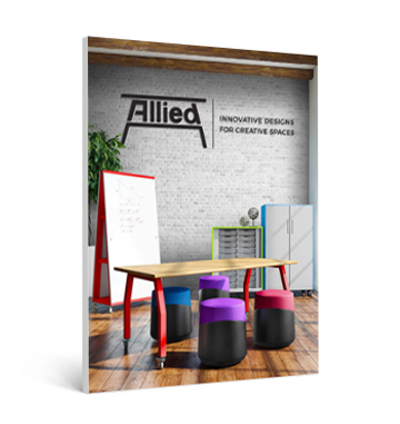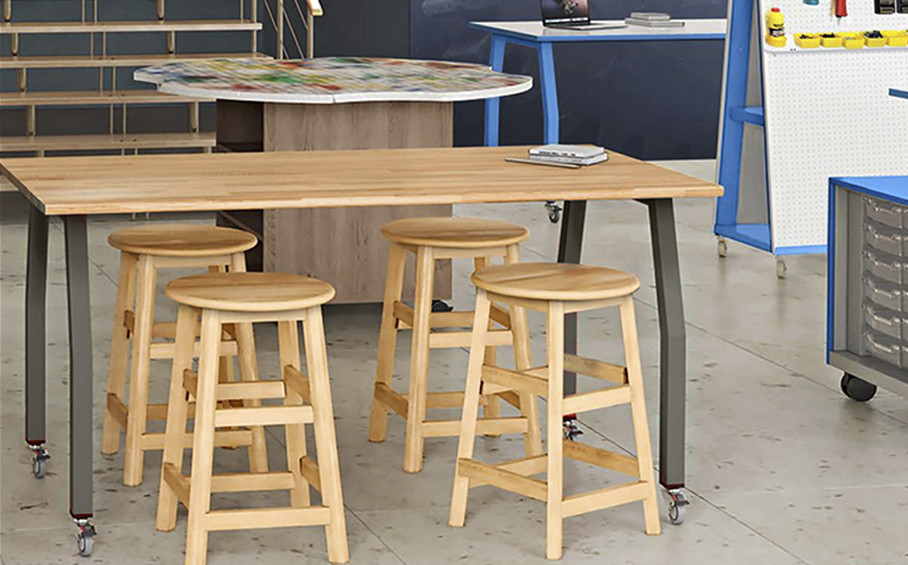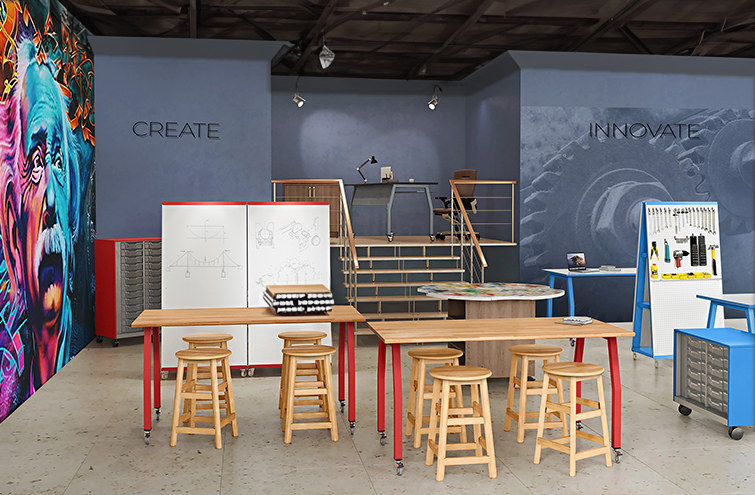Creating a student-centered classroom is crucial for fostering a positive and effective learning environment. One key aspect of achieving this is through the strategic incorporation of furniture. Allied tables and desks provide a quality solution that can enhance the student-centered approach. Additionally, the advantages of mobile tables and desks compared to furniture on glides should be considered, as well as the impact of colors on student engagement. Let’s explore these topics in detail.
To establish a student-centered classroom, it’s essential to choose furniture that promotes collaboration, flexibility, and comfort. Allied tables and desks offer a range of options that align with these goals. Here’s how you can incorporate them effectively:
- Collaborative Workstations: Arrange tables and desks in clusters to facilitate group work and discussions. Consider using Allied tables with adjustable heights, allowing students to customize their workstations to suit their needs.
- Flexible Seating: Incorporate different seating options, such as ergonomic chairs and stools, to accommodate individual preferences and support comfortable learning experiences.
- Versatile Storage Solutions: Integrate Allied storage units, such as shelved cabinets or tote cabinets, into the classroom to maintain an organized environment. These can also be used to showcase student work or display educational resources.
- Personalized Spaces: Provide students with opportunities to personalize their workstations with accessories like whiteboard board tops or personal storage areas. This promotes a sense of ownership and helps students feel connected to their learning space.
Mobile tables and desks offer several advantages over furniture on glides:
- Flexibility and Adaptability: Mobile furniture enables easy reconfiguration of the classroom layout, promoting different teaching styles and accommodating various activities. This adaptability encourages collaboration and allows for quick adjustments based on the evolving needs of the students.
- Space Optimization: Mobile furniture can be easily moved and stored, allowing for efficient use of space. This flexibility is especially beneficial in classrooms with limited square footage.
- Improved Accessibility: Mobile tables and desks can be adjusted to different heights, ensuring accessibility for students of various sizes and abilities. This inclusivity promotes equitable learning opportunities for all students.
Impact of Colors on Student Engagement:
Colors play a significant role in setting the mood and atmosphere of a classroom. Here’s how different colors can impact student engagement:
- Blue: Blue is known to promote calmness, focus, and concentration. It can be an ideal color for areas where students need to concentrate on individual tasks, such as reading or studying.
- Green: Green is associated with tranquility, balance, and relaxation. It can create a soothing environment, making it suitable for quiet areas or spaces dedicated to reflection.
- Yellow: Yellow is a vibrant and energizing color that can stimulate creativity and positivity. It can be used in areas where collaborative work or brainstorming sessions take place.
- Red: Red is a stimulating color that can increase heart rate and evoke excitement. It can be used strategically in spaces designed for active learning or physical activities.
- Neutral Tones: Neutral colors like gray or charcoal can provide a calming backdrop, allowing other elements of the classroom to stand out. They can also create a sense of balance and harmony.
When incorporating colors into the classroom, it’s essential to strike a balance and consider the preferences and sensitivities of the students. Opt for a harmonious color scheme that complements the overall aesthetics of the classroom while promoting a positive learning environment.
By incorporating Allied tables and desks, you can create a student-centered classroom that encourages collaboration, flexibility, and comfort. Mobile school furniture offers advantages such as flexibility, space optimization, and improved accessibility compared to furniture on glides. Additionally, colors have the power to influence student engagement, so it’s important to choose them thoughtfully to promote the desired atmosphere and mood in the learning space. By focusing on these elements, you can design a classroom that supports active student participation, fosters a sense of ownership, and enhances overall learning outcomes.








